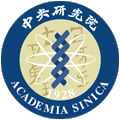
生化分子質譜與光譜學實驗室
Laboratory for Mass Spectrometric and Spectroscopic
Studies of Biomolecules


|
生化分子質譜與光譜學實驗室 |

|
Molecular beam technique
What is a molecular beam?
Molecular beams are high-density gas molecules flowing in the same direction at almost the same speed, so molecular beams have the following characteristics: (1) high flow rate of gas molecules, (2) all molecules move at the same speed, (3) all molecules go to the same direction, so there are no collisions between the molecules.
How are
molecular beams generated?
Pack gas molecules in a high-pressure (a few atmospheres) container, and force
the gas molecules into the vacuum chamber through a small hole (about 100-500
microns in diameter). This is the process of isentropic expansion, also known as
supersonic expansion. The flow of molecules about one mm in diameter in the
middle is selected by means of a conical metal element (skimmer), which is the
molecular beam. The main component of the pulsed molecular beam source is a
pulsed gas valve; when the valve is closed, the high-pressure chamber and the
vacuum chamber are isolated from each other; when the valve is opened, the gas
is rushed into the vacuum chamber from the high-pressure chamber through the
nozzle. If the pressure of the high-pressure chamber is high enough and the hole
at the exit is small enough, the condition of free expansion can be achieved and
a supersonic molecular beam can be generated. There are many types of pulse
valves that generate pulsed molecular beams. The pulse valve we use (General
Valve Corp, Series 9) is made using the mechanical principle of solenoid
conductance. This pulse valve is operated by a pulse valve controller (a
electric power supply which controls the frequency and trigger time of the pulse
valve). In typical experiments, the trigger opening time is set to 100
microseconds, and the frequency is 10 Hz. Because the unit molecular density of
the pulse type is higher than that of the continuous type, and the molecular
velocity distribution is narrower, it is easy to assemble and has low background
noise. The required pumping pump does not need a high pumping speed. It is more
economical. The outlet nozzle diameter of the pulse valve we use is 0.15 mm in
diameter, the top angle is 30 degrees, and 10.5 mm before the nozzle (nozzle).
The skimmer is a conical stainless steel piece with a height of 20 mm, a top
diameter of 1 mm, and a bottom diameter of 20 mm. The middle part of the
generated supersonic molecular beam pass through the skimmer is usually referred
to as molecular beam.
How can molecular beam technology be used?
In the study of photodissociation or chemical
reaction dynamics, this technique can be used to generate a single molecular
collision event, with little background interference and greatly improved
detection sensitivity. In molecular spectroscopy research, since molecular beams
are generated through the process of adiabatic expansion, the probability of
molecular rotation and vibration is reduced to a very low level, that is to say,
molecules can be prepared in a ground state that hardly rotates or vibrates. So,
the resolution of the molecular spectrum can be greatly improved, which is
beneficial to distinguish complex chemical molecules. Molecular beam technology
can also be used to prepare atomic or molecular clusters. Because of their
special physical and chemical properties. This technology provides a new field
of research for substances and materials. For example, clusters of cobalt atoms
can be used as catalysts for oil cracking, clusters of silver atoms play a very
important role in the imaging process of photographic negatives, clusters of
carbon 60 may be the nanomaterials of the future, and the formation of acid rain
in the atmosphere is also related to water and other molecules. Clusters are
related. In terms of industrial applications, molecular beam technology can also
be used to evaporate thin films, which is very relevant to the manufacture of
semiconductor products.
References:
1.
“Molecular Beams”, Norman F. Ramsey, Oxford University Press, New York,
1956.
2.
“Molecular Beams and Low Density Gasdynamics”, Peter P. Wegener (ed.),
Marcel Dekker, Inc., New York, 1974.
3.
“Atomic and Molecular Beam Methods”, Giacinto Scoles (ed.), Oxford
University Press, New York, 1988.
回首頁 (back to homepage)
聯絡電話:(02)2366-8222,傳真:(02)2362-0200,電子郵件: wbt@sinica.edu.tw。
郵政地址:
106台北市羅斯福路四段一號,郵政信箱23-166號中研院原分所。
上次網頁修改日期:
2023/02/25
背景音樂:Fernando, by ABBA